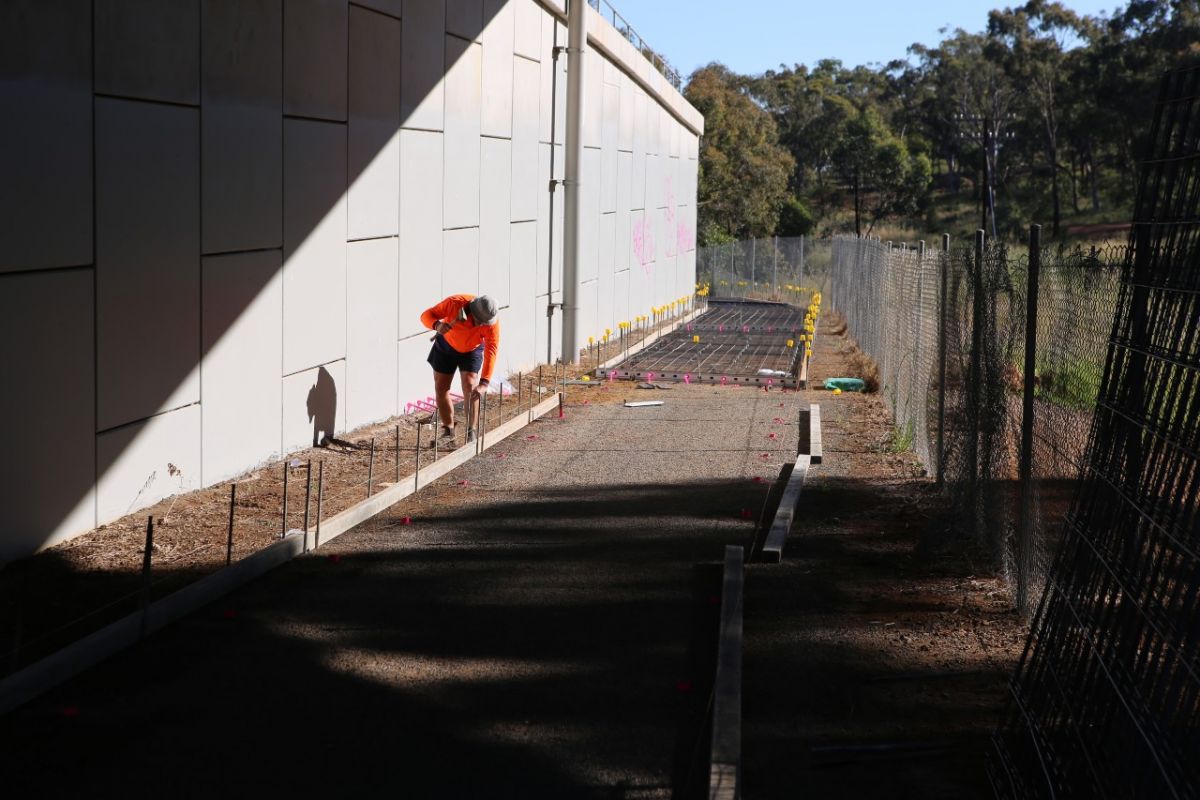
Work on cycle paths rolling along
Published: 11 Mar 2021 2:48pm
Wagga Wagga will soon be home to the largest regional cycling pathway network in regional Australia as work on the city's Active Travel Plan project counts down to completion at the end of this year.
The 56 kilometres of cycle paths will assist community members to traverse the city with easier access to the Central Business District from outlying suburbs.

The Active Travel Plan concept was first introduced to the community in September 2016 as part of Wagga Wagga City Council’s Integrated Transport Strategy which outlined the vision for cycling pathways across the city.
Council undertook extensive community engagement regarding the routes in 2019, including several public seminars which were well attended, before the plan was finalised.
This engagement also involved letters to residents and social media campaigns to ensure community feedback was received and used to shape the routes to achieve the final design. Letters were also sent out to residents in May 2020 detailing the final locations of the route.
Council’s Director Regional Activation Michael Keys said residents can expect to see major works taking place at a number of locations across the city in coming weeks.
“It’s full steam ahead on the Active Travel network. We’re rolling out the project at quite a fast pace to ensure we take full advantage of the State Government funding available to us,” Mr Keys said.
“This is a significant project and one which implements generational change in the way our city connects and develops.
“It’s a $16.7 million project being delivered in two stages and we’re getting closer to our funding deadline. The works from now until the end of the year will be very visual around the city and we appreciate the patience and understanding of those residents who may be affected by construction works.
“Council understands there will be some inconvenience during the coming months in certain areas and there will be changes to parking arrangements along some streets which will need to be line-marked at the end of the project.
“The end result is going to be fantastic for Wagga Wagga – there’s no other regional city in Australia which can boast a facility like this one.
“We were selected for this project under one of the ‘Premier’s Priorities’ programs which is aimed at improving the community’s lifestyle while promoting health benefits such as cycling, walking and jogging.
“I’m sure our community will derive massive benefits on many levels which includes tourism and economic advantages as this project will attract many thousands of people to Wagga Wagga.”

Mr Keys said the Active Travel Plan network was strategically planned in a way to give residents from all corners of the city easier access to the CBD and most of the key points around the suburbs.
“We’re encouraging the use of non-motorised transport to get around the city which reflects in a more active community with a reduced reliance on motor vehicles,” Mr Keys said.
“The construction of two ‘end of trip’ facilities at the Oasis and Visitor Information Centre will provide for those who want to ride to work, securely park their bikes and change before going to the office.
“The network will clearly complement other major projects being undertaken in the city, such as Riverside Stage 2 at the beach precinct and the Multisport Cycling Complex at Pomingalarna.
“These three projects when combined represent a $35M investment in the city – a significant amount of money going directly into the community with long-term benefits for many years to come.”
This project is supported by the NSW State Government. Stage 1 funding is $12.81 million ($11.35 million NSW Government + $1.45 million Council) and Stage 2 funding is $3.92 million ($3.8 million NSW Government + $130 thousand Council).
See more information about the Active Travel Plan and how it connects to your suburb on the Active Travel Plan project page.
